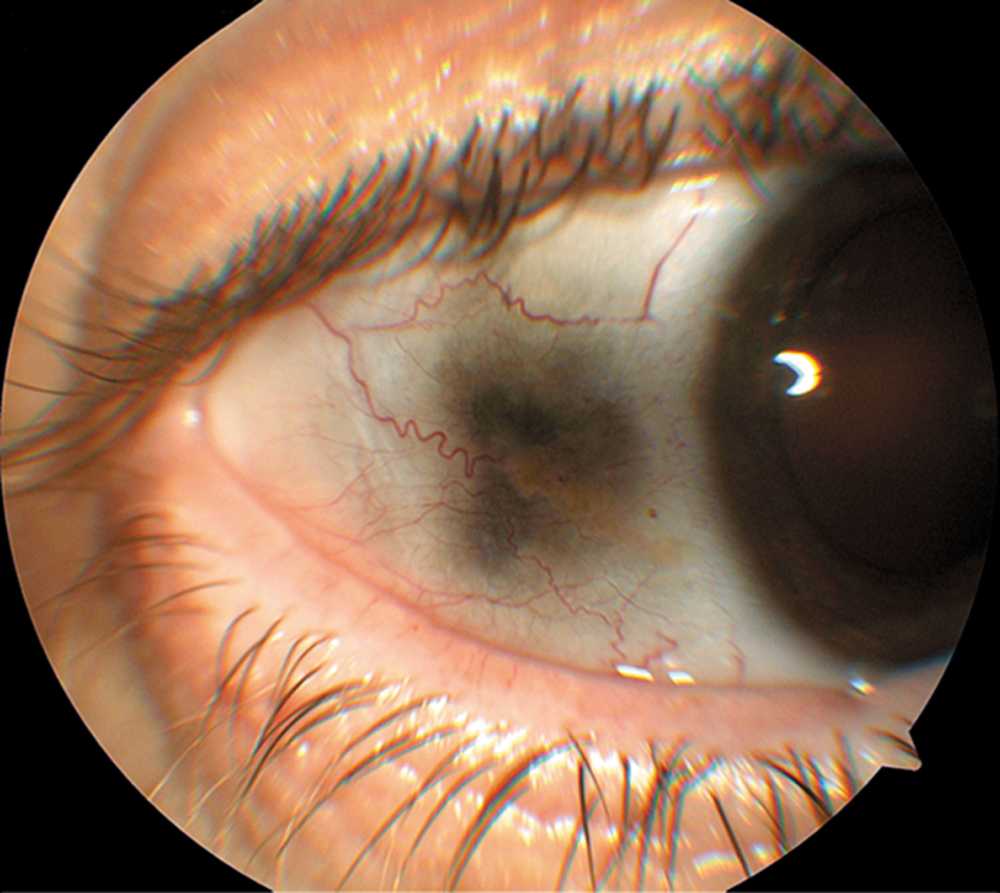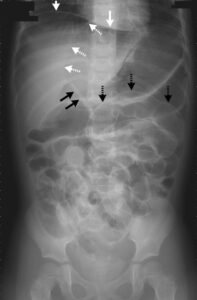This post is an answer to the Case – Dark Pigmentation of the Sclera
A 52-year-old man with large-joint arthropathy presented for surgical replacement of the right knee. His previous history included aortic stenosis and replacement of a shoulder joint following trauma.
At the time of the shoulder replacement, the joint appeared to be black, as did the subsequently excised knee joint. Histological examination showed pigment deposition consistent with ochronosis.
The patient reported that since childhood his urine had turned a dark color on exposure to air. He was also noted to have dark pigmentation of the sclera and a blue tinge to his ear cartilage.
Measurement of urinary organic acid levels showed a large quantity of homogentisic acid, which was consistent with a diagnosis of alkaptonuria.
This autosomal recessive disorder is caused by a deficiency in homogentisic acid oxidase, leading to a buildup of homogentisic acid, which can cause degenerative arthritis and calcific aortic stenosis. Excess homogentisic acid is also deposited as an ochre-colored pigment in bone, cartilage, and skin, causing a bluish-black discoloration, termed ochronosis.
Although no other family members were known to have this disorder, the patient’s parents were consanguineous. The patient subsequently required aortic-valve replacement and began to receive nitisinone, a drug that reduces levels of homogentisic acid.


